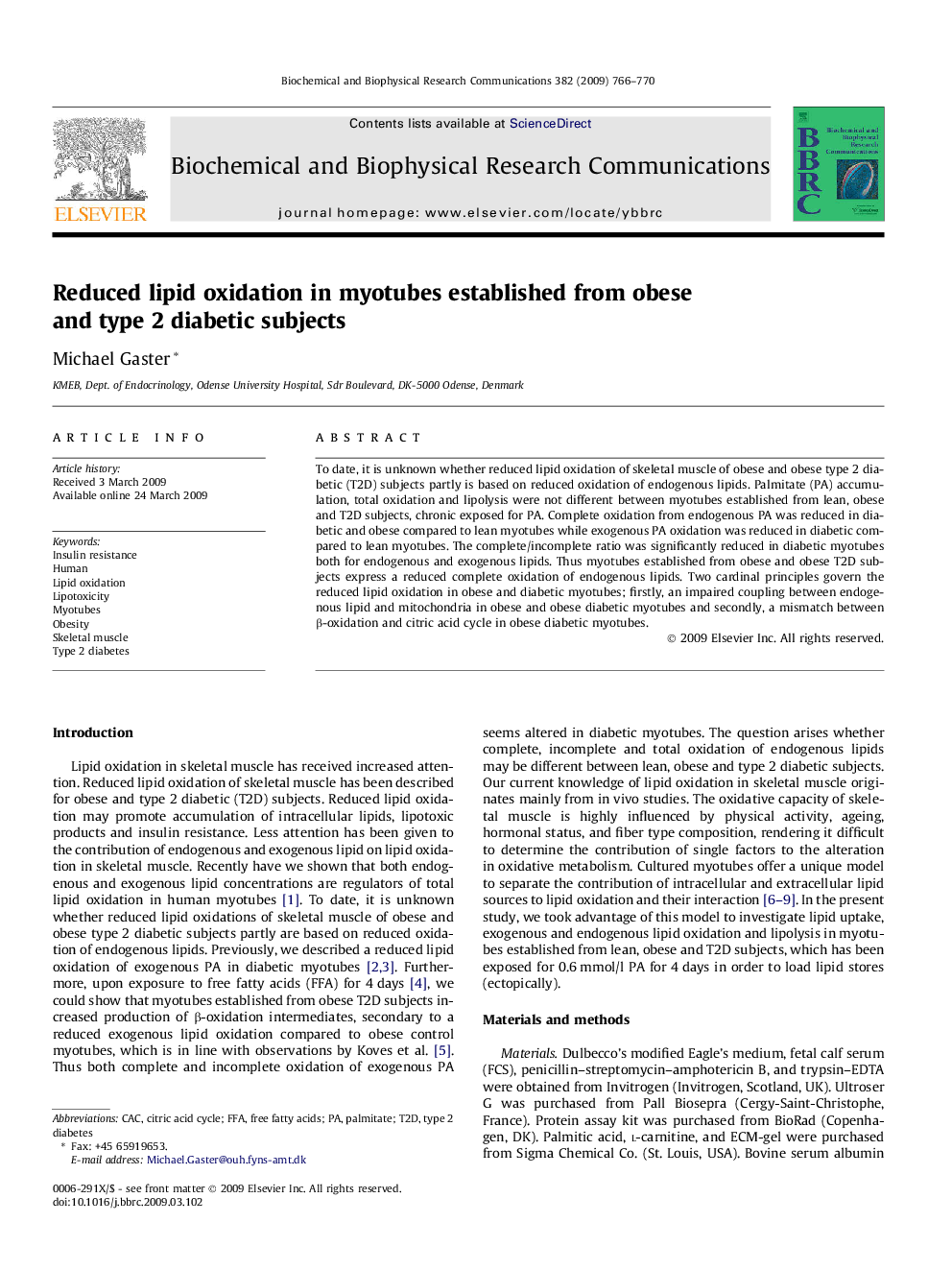| Article ID | Journal | Published Year | Pages | File Type |
|---|---|---|---|---|
| 1933759 | Biochemical and Biophysical Research Communications | 2009 | 5 Pages |
To date, it is unknown whether reduced lipid oxidation of skeletal muscle of obese and obese type 2 diabetic (T2D) subjects partly is based on reduced oxidation of endogenous lipids. Palmitate (PA) accumulation, total oxidation and lipolysis were not different between myotubes established from lean, obese and T2D subjects, chronic exposed for PA. Complete oxidation from endogenous PA was reduced in diabetic and obese compared to lean myotubes while exogenous PA oxidation was reduced in diabetic compared to lean myotubes. The complete/incomplete ratio was significantly reduced in diabetic myotubes both for endogenous and exogenous lipids. Thus myotubes established from obese and obese T2D subjects express a reduced complete oxidation of endogenous lipids. Two cardinal principles govern the reduced lipid oxidation in obese and diabetic myotubes; firstly, an impaired coupling between endogenous lipid and mitochondria in obese and obese diabetic myotubes and secondly, a mismatch between β-oxidation and citric acid cycle in obese diabetic myotubes.
